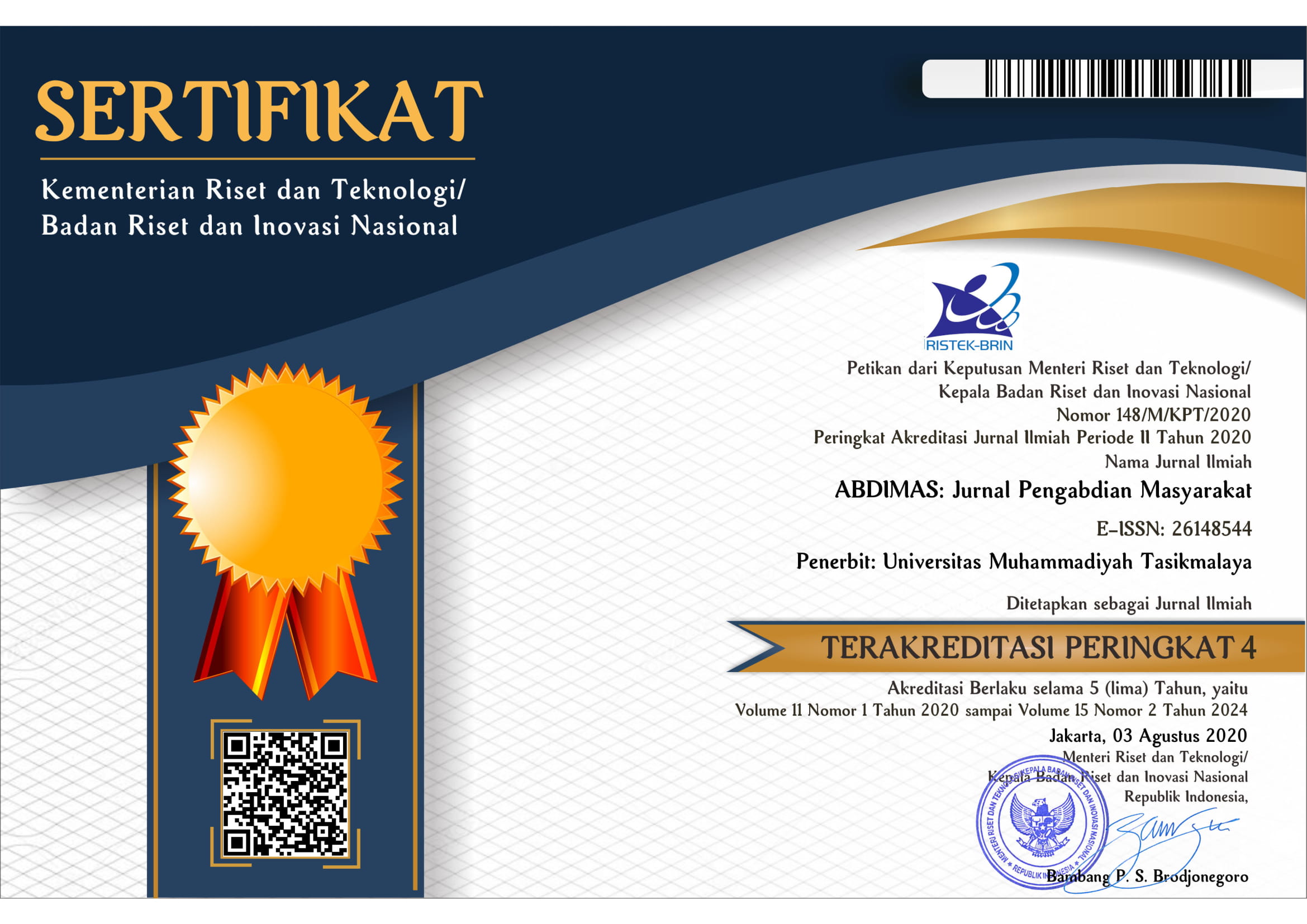Exhaled Breath Analysis for COVID-19 Investigation: Clinical instruments or Scientific Toys?
DOI:
https://doi.org/10.35568/abdimas.v6i1.2910Keywords:
COVID, Corona Virus, virus, Exhaled Breath AnalysisAbstract
The COVID-19 pandemic was crucial worldwide. Ongoing COVID-19 disease investigation methods were primarily based on molecular and serological detection. These instruments are invasive and necessarily require the use of trained personnel. Non-invasive COVID-19 investi-gation methods could help diagnose and monitor the outbreak. Because the SARS-CoV-2 virus is non-living, it lacks its metabolism. Different infectious diseases can release volatile organic compounds (VOCs), resulting in specific VOCs. All of these are metabolic products primarily produced locally in the respiratory system and systemically via blood circulation. We overview the clinical applications in the COVID-19 investigation and summarize the methodological is-sues. Numerous VOCs in the exhaled breath have the prospects to distinguish patients from healthy people and people infected with COVID-19. It is hard to define COVID-19 using VOCs from exhaled breath. Due to a lack of standardization in data collecting and processing proce-dures, their use in clinical practice is hampered. There are insufficient studies and external vali-dation to determine whether exhaled breath analysis adds value to the diagnostic and follow-up processes for COVID-19 infection. In conclusion, the use of VOCs in exhaled breath as a marker for COVID-19 infection has not been validated for clinical use.














